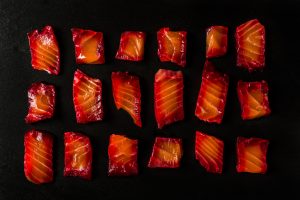Signs of an ingredient or dish visibly being burnt used to be cause for concern and often would be sent back to your station, never leaving the pass. However, there’s a rising trend in burning things with intention. Purposely seeking those charred bits, going just beyond the line of caramelisation. In many establishments, chefs are even highlighting the circumstance with the word burnt being highlighted on the menu.
Well some of you might be thinking this is nothing new. After all, Cambridge burnt cream has been a solid item on the desert menu for many years, but consider Argentina’s Francis Mallman for a second. Mallman, a chef and restaurant owner, has for a long time championed the asado, an Argentinian method of cooking over an open fire. What’s probably responsible for Mallman’s rising fame, is the infatuation the western world has had with American barbecue. Although pulled pork is now found on every restaurant menu and supermarket shelf, the ‘low and slow’ method and deep smoky flavour opened a gateway into other, more elemental ways of cooking with fire. So while Mallman was sat burning cherry tomatoes on a plancha and relishing in how delicious they are like that, all of a sudden, the media hype surrounding low smoked barbecue crept up and catapulted him into an influential hot-seat.
Francis Mallman takes many ingredients past the point of caramelisation and way into the territory of being burnt. Fruit is a common ingredient that gets the blackened treatment with the aforementioned cherry tomatoes, that are put cut-side down on screaming hot planchas, and peeled and skewered pineapples.
Closer to home, Ottolenghi has been knocking up a burnt onion dip in his restaurants, while Mayfair’s Kitty Fishers, have become known for their burnt butter and sourdough, a dish that is arguably more associated with the restaurant than any other dish.
In a recent New York Times article called ‘The Dark Allure of Burned Food’, chef Gerardo Gonzalez explains how using a burnt fruit or vegetable in a dish, such as onion or citrus, gives it a meat-like depth of flavour which can be hugely rewarding in vegetarian dishes. Perhaps this leads to a bigger picture about not being too concerned with how something looks and focusing on flavour – easy for the kitchen, less so for the diner.
However, there’s no avoiding that charred food is incredibly mouthwatering. Whether it’s charred chicken tikka, sausages on the grill, or those burnt tomatoes. Toast is a classic case in point, when bread begins to char, brown and blacken, it releases wonderful aromas, but leave it a split second too long, and it’s an acrid, inescapable smell that can ruin an appetite. Yes, burn with intention, but let’s not do things just for the sake of it. Now where’s the kitchen blowtorch? I’ve got some Cambridge cream to be burnin’…


